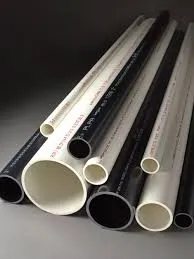Nov . 30, 2024 04:06 Back to list
HDPE Pipe Sizes and Manufacturers for Optimal Water Management Solutions
Understanding HDPE Pipe Sizes and Their Manufacturers
High-Density Polyethylene (HDPE) pipes have gained significant popularity in various industries due to their outstanding durability, corrosion resistance, and flexibility. These qualities, along with a lower weight compared to traditional materials, make HDPE pipes a preferred option for a multitude of applications, including water supply, sewage systems, agricultural irrigation, and industrial processes. Understanding HDPE pipe sizes and the manufacturers that produce them is crucial for both engineers and procurement specialists seeking reliable piping solutions.
HDPE Pipe Sizes
HDPE pipes come in various sizes to accommodate different applications. The sizing of HDPE pipes is typically governed by industry standards, including the American National Standards Institute (ANSI) and the American Society for Testing and Materials (ASTM). The sizes are categorized by both diameter and pressure classes.
1. Diameter HDPE pipes are usually available in a range of diameters, typically measured in inches, spanning from ½ inch to 65 inches. The choice of diameter depends on the requirements of fluid flow, the intended application, and hydraulic considerations. For instance - Smaller diameters (½ inch to 4 inches) are commonly used for residential plumbing and irrigation systems. - Medium diameters (6 inches to 24 inches) are frequently used in municipal water supplies and sewage systems. - Larger pipes (above 24 inches) are generally utilized for industrial applications or major infrastructure projects.
2. Pressure Ratings HDPE pipes are also classified based on their pressure ratings, which are critical for determining the pipe's suitability under specific operating conditions. The pressure ratings are denoted as SDR (Standard Dimension Ratio) values, which reflect the relationship between the pipe's diameter and wall thickness. Common SDR ratings range from SDR 7 to SDR 41, with lower SDR values indicating thicker walls and thereby higher pressure capabilities.
The Role of Manufacturers
Manufacturers play a pivotal role in the production of HDPE pipes, ensuring that they meet the required standards and specifications necessary for their intended applications. The quality of HDPE pipes can significantly influence their performance and longevity, making it essential to source them from reputable manufacturers. Here are some key aspects to consider when evaluating HDPE pipe manufacturers
hdpe pipe sizes manufacturer

1. Certifications and Quality Assurance Established HDPE pipe manufacturers often hold various certifications, such as ISO 9001, which indicates a commitment to quality management systems. Additionally, pipes should meet ASTM standards, ensuring they are manufactured under strict guidelines for durability and performance.
2. Product Range A reputable manufacturer should offer a wide range of HDPE pipe sizes and accessories, such as fittings, valves, and joints. This diversity allows buyers to find the appropriate components needed for comprehensive piping solutions tailored to their projects.
3. Customization Options Depending on specific project requirements, some manufacturers provide customization options. This may include variations in size, color, and pressure ratings, enabling more tailored solutions for unique applications.
4. Technical Support and Services Leading manufacturers often provide extensive technical support, including installation guidance and troubleshooting resources. Having access to expert advice can help ensure that systems are designed and installed correctly, minimizing potential issues down the line.
5. Innovations The industry is continually evolving, with new technologies emerging that enhance the durability and flexibility of HDPE pipes. Manufacturers at the forefront of innovation often offer advanced products such as double-walled pipes for superior insulation and specialized jointing technologies that reduce leakage.
Conclusion
The choice of HDPE pipe sizes and their manufacturers is a critical factor in the successful implementation of piping systems across various sectors. By understanding the different dimensions and pressure ratings, along with evaluating the capabilities of manufacturers, stakeholders can make informed decisions. Whether it is for a residential project or an extensive industrial operation, the quality and performance of HDPE pipes will significantly impact overall efficiency and reliability. Thus, careful consideration of these aspects will help ensure that projects run smoothly and effectively, meeting the demands of modern infrastructure.
-
High-Quality PVC Borehole Pipes Durable & Versatile Pipe Solutions
NewsJul.08,2025
-
High-Quality PVC Perforated Pipes for Efficient Drainage Leading Manufacturers & Factories
NewsJul.08,2025
-
High-Quality PVC Borehole Pipes Durable Pipe Solutions by Leading Manufacturer
NewsJul.08,2025
-
High-Quality PVC Borehole Pipes Reliable PVC Pipe Manufacturer Solutions
NewsJul.07,2025
-
High-Quality UPVC Drain Pipes Durable HDPE & Drain Pipe Solutions
NewsJul.07,2025
-
High-Quality Conduit Pipes & HDPE Conduit Fittings Manufacturer Reliable Factory Supply
NewsJul.06,2025

